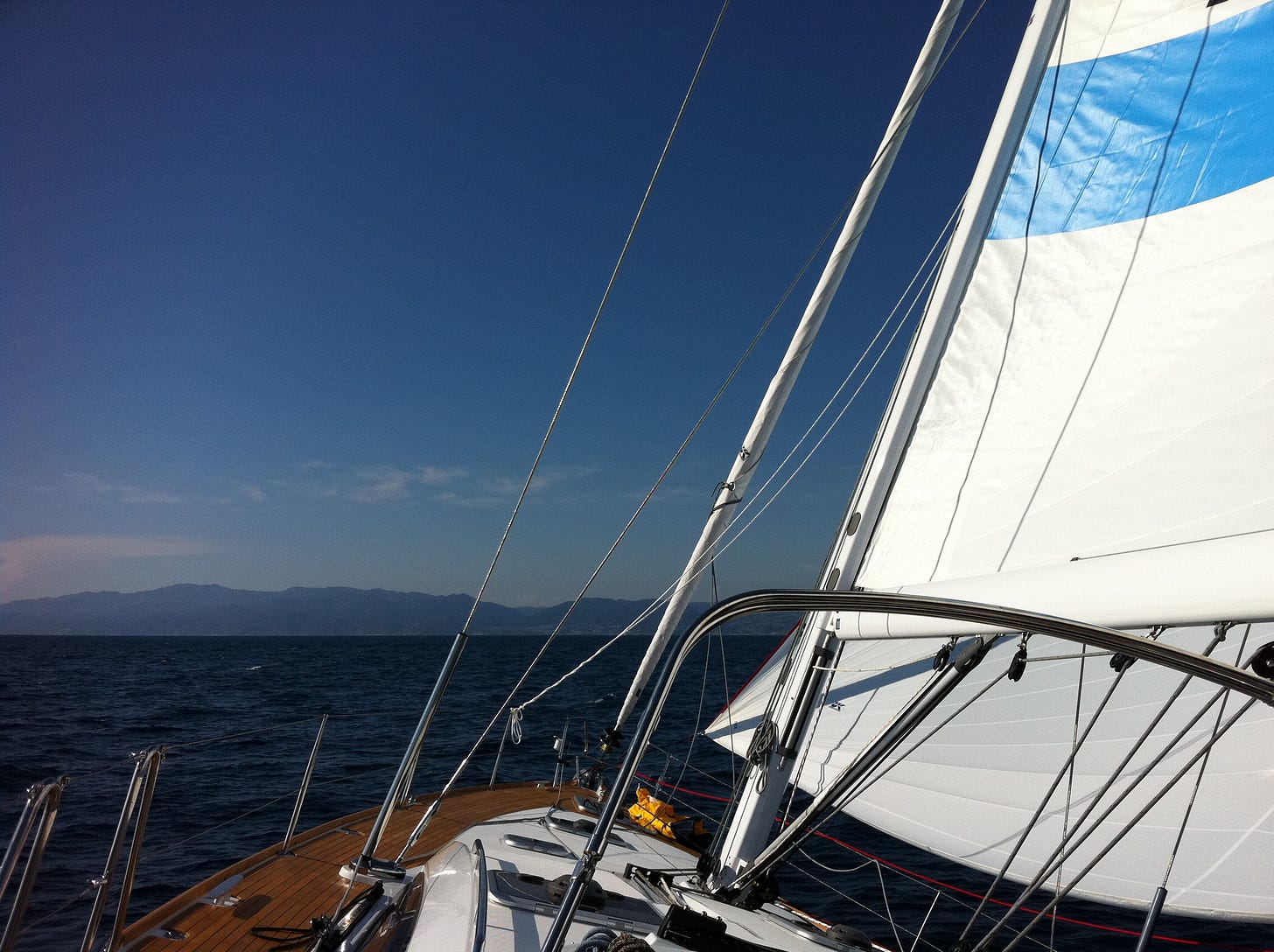Since 2008, I’ve had the good fortune of sailing a few days a year out of Marina del Rey. My delusions of doing the Transpac (the Southern California to Hawaii race) for my 40th birthday are partially sustained this way. This summer I’ve also been able to start racing on an (almost) weekly basis, which is a great way to start logging the necessary sea miles to prepare for the Transpac.
From Memorial Day to Labor Day in Marina del Rey, it’s racing season. The weather is agreeable for sailing year round, but the longer days mean more time for races after work. The Vic Smith Tuesday Night Trials series we’ve joined is incredibly casual. Each week we rent the same early 80s Merit 25 to take part (the appropriately named Time Capsule with its cheery, banana-hued hull). A weekday sailboat rental can be cheaper than going out with friends to pub trivia, so long as you’re renting from a charter company where you’re a known entity and you aren’t crashing into things out there. The series is tailored to beginners. For example, challenges over rules violations (which are taken up with the race commissioner concerning the conduct of other boats) are discouraged. The real upside is that some boats are as bad at racing as we are, which means we can sometimes do quite well in terms of final placement. Jibes aside, it’s the perfect environment to try improving your fundamentals and to have your inadequacies as a sailor laid bare.

The race structure is also simple. All the boats cross an imaginary but pre-agreed starting line at the same time, round a marker (or several depending on the course) and return to the finishing line. Fastest to cross the finish line generally wins, with some small adjustments on the back end (unless all the boats in the race are the same make and model) with respect to handicaps that influence your ranking and your final times. These adjustments are based on your boat’s individual PHRF (Performance Handicap Racing Fleet) number and keeps things fair among boats that can have varying designs, equipment and maximum theoretical speeds. So even a smaller boat like ours can win if it’s being sailed optimally.

You also need gear for sailing (which is a lot of the fun for certain kinds of hobbyists): gloves so you aren’t tearing up your hands, a hat and sunglasses for the wind and sun (and tethers for both so you don’t have to glumly watch them sink into the ocean), a windproof layer (vest, jacket, choose your own adventure) and a bag in which to carry it all. A sailing bag is a big opportunity to personalize. To keep things jovial, I use a Goldman Sachs banker bag I purchased from eBay, which was shipped to me out of Kentucky (it’s fun to speculate on the bag’s former life). I had to settle for a banker’s bag from a bank that had not yet collapsed. I was very late to the party for securing Enron swag (or more embarrassingly, for my initial search for Grant and Ward ephemera, if it ever existed at all). Swag for collapsed institutions can command quite a premium in the secondary markets.
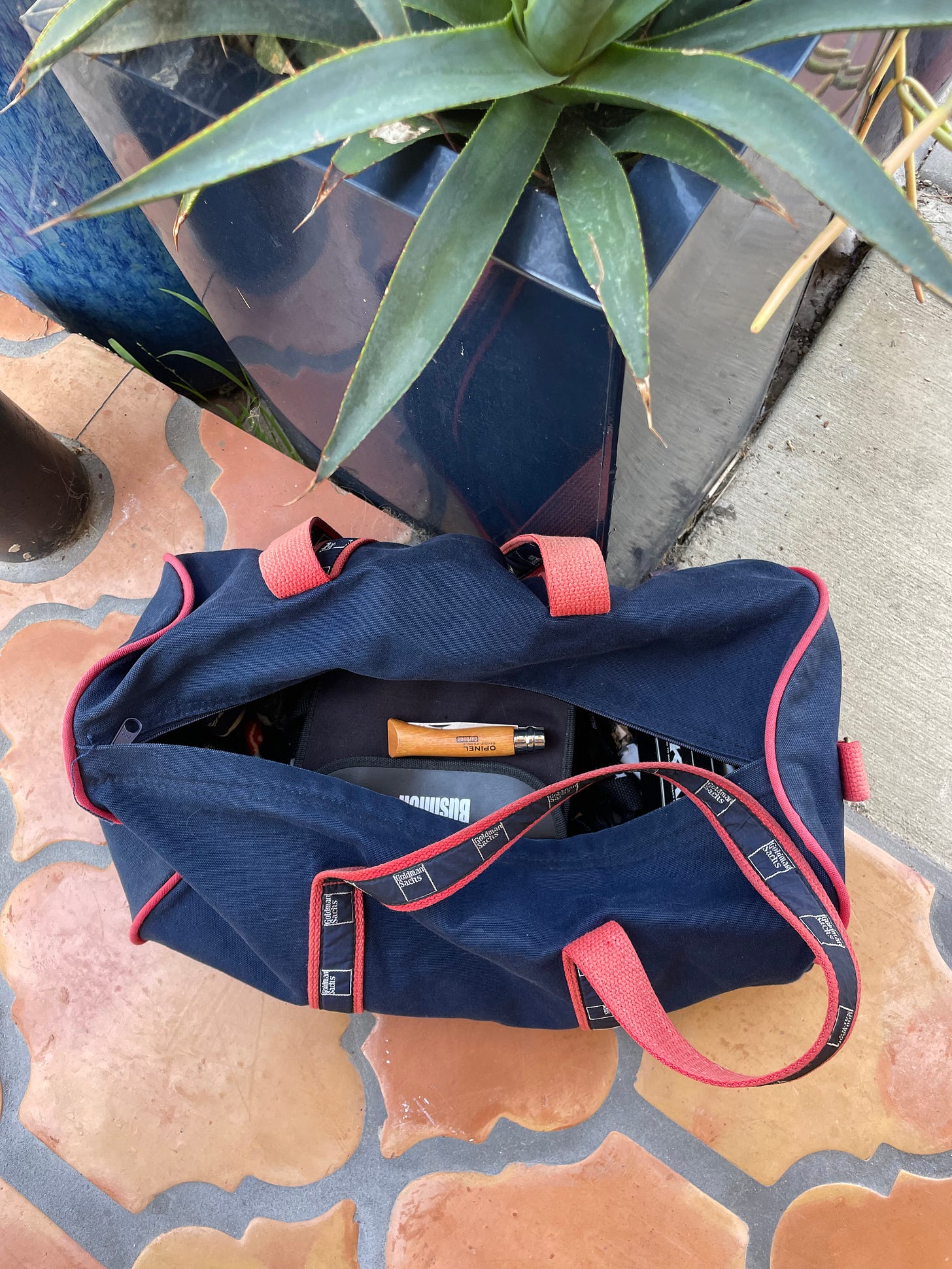
The end result of all this gearing up is that you are dressed for the very physical activity of racing, not as a yachtsman on holiday (with the white pants, Breton stripes, or other costume elements approaching caricature).1 Is it moisture wicking and breathable with built-in stretch? That’s probably a good piece of clothing for racing. You need performance wear, as a good crew is expected to move around on the boat for the whole race: adjusting sail trim, repositioning weight as the boat changes directions across the wind, running forward to deal with a temperamental sail or whisker pole, etc. (and there can be a lot you don’t expect - I once had an algae covered docking line transfer a perfect Crayola blue-green crayon streak across a white sailing jacket).
Sailing has an aesthetic problem shared with other legacy, country club-adjacent sports like golf and tennis. Most modern sailing performance gear is tacky garbage. If you lean into the performance-driven apparel, you’ll end up looking like a deck hand on leave from opillio crab season or a dad attending a big golf tournament - both are bad.
For my sailing kit, I try to work backwards from the pure techwear/utility approach and get back to something closer to archival sportswear (all those images of Kennedy are inescapable when discussing sailing and style). This means cotton shorts with a hint of stretch (mine are J. Crew but plenty do them well), a fun belt (recently, Sid Mashburn’s polo belt), white deck shoes (Sperry Topsiders, although I wish the grip/tread would last longer on those) and for team cohesion, we all have a Performance Earl Polo from Original Penguin in “Warm Apricot.” This shirt is moisture wicking, 100% polyester (44% of which is recycled) and perfectly suited to the varying conditions of the race. It is also the secret to our success (citation not found).
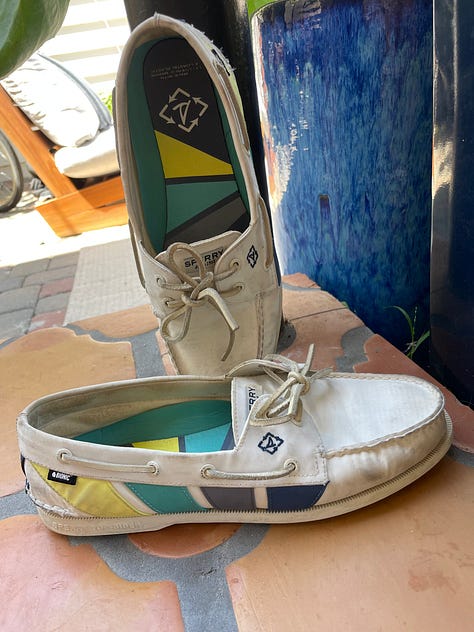
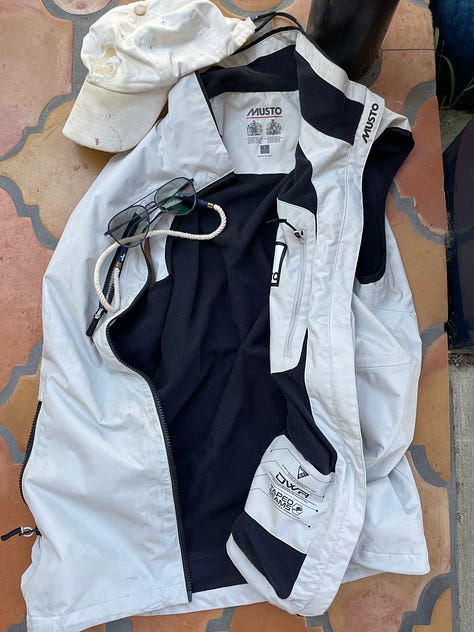
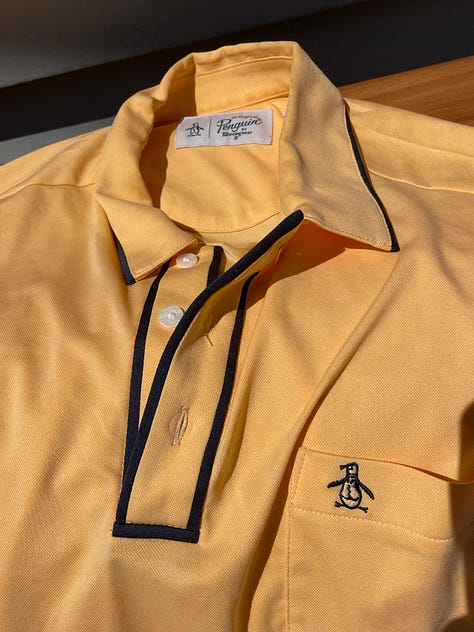
If you’re looking for some inspiration to get into sailing, I’d recommend the America’s Cup episode of the Untold documentary series on Netflix (from Chapman and Maclain Way, directors of Wild Wild Country and the also excellent Battered Bastards of Baseball2). You don’t need to like sports or know anything about the America’s Cup to enjoy the story and personalities. It certainly helps that everyone involved looks stylish as hell (our own choice of an Original Penguin polo for this year’s team kit was directly inspired by archival footage of the Australian American’s Cup team training in the very same).
Post Script: Our team starts this summer have been excellent (crossing the starting line in great position and as uncomfortably close in a scrum with the other boats as we should be), but we have inexplicably been losing position and speed to other boats on some of the legs of the courses (primarily pointing upwind to round the first mark). And sailing, with its many complexities and real-time reward system for competence (you really can’t fake knowing how to make the boat go faster), keeps you humble. Every race has a moment (or several) that is like shanking a drive in in front of all your friends while golfing. You and your teammates then invariably take turns guessing at whether the reversal of fortunes is due to operator error (certainly) or the state of the equipment (“must be the rigging, the amount of wear and tear on the mainsail, we’re just spilling too much wind…” and all can nod in polite, contemplative agreement before the next theory is posited). And so you lose to some of the more experienced crews out on the water, but that’s superior to the alternative (which is to not have the chance to race at all). Once you’ve put the boat away, your only remaining choice is a beer or a Dark and Stormy at the post race drinks.
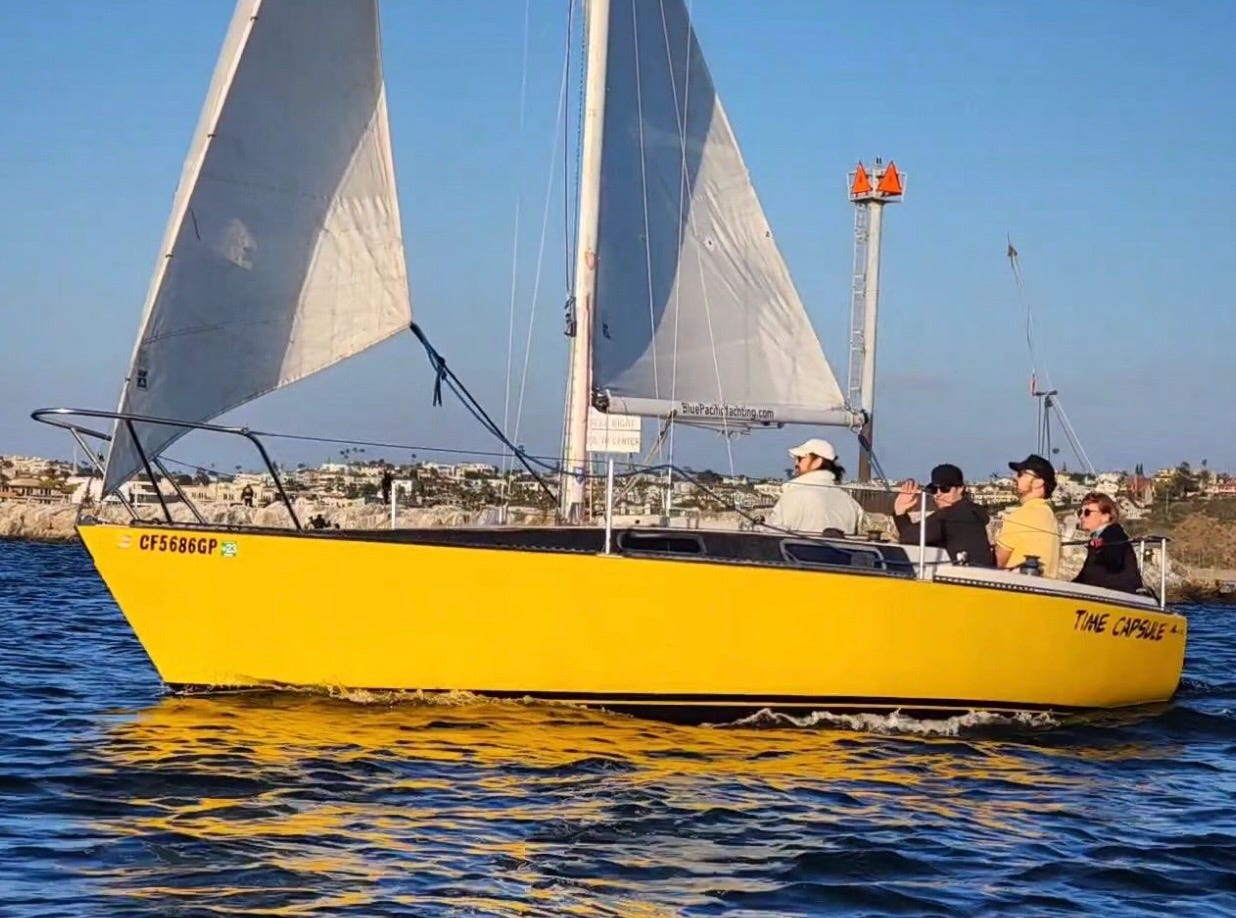
A quick corollary: the friend who shows up to go sailing in the captain’s hat they bought is always the drunkest, least competent sailor, so avoid this look unless you are truly the world’s greatest party animal.
The Way Brothers seem to have cornered the market on a very specific aesthetic from the mid 70s through early 80s. See also their Jenner episode focused around the 1976 Montreal Olympics from the same Netflix series for some transcendent sports fashion on the athletes, reporters and spectators.




